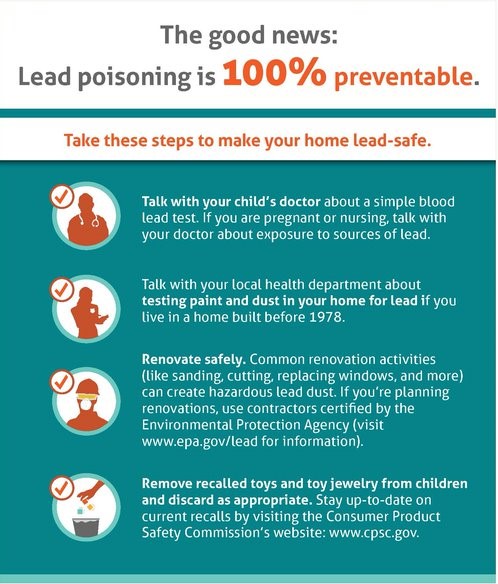National Lead Poisoning Prevention Week (Oct 24-30) – outreach toolkit available
Around 3.3 million American households, including 2.1 million low-income households, have children under 6 years of age who live in homes with lead exposure hazards (e.g. lead paint, lead pipes or fixtures, soil around the house). Lead exposure can lead to delayed growth and development, damage to the brain and nervous system, learning and behavior problems, and other health-related problems in children.
There is no safe blood lead level in children. Even relatively low levels of lead exposure can impair a child’s cognitive development. And children are not exposed equally to lead, nor do they suffer its consequences in the same way. These disparities disproportionately burden families in minority, refugee and immigrant, and low income groups, and their communities. The problem is largely preventable with increased testing, education, and a focus on prevention.
In recognition of National Lead Poisoning Prevention Week, October 24-30, 2021, the DOH Childhood Lead Poisoning Prevention Program, located in the Environmental Health Division, wants to make you aware of this year’s National Lead Poisoning Prevention Week communications webpage. This cross-federal agency (CDC, EPA, HUD, HHS) resource provides ready-made daily content themes, graphics and infographics, hashtags, posters/flyers, and more for you to share across your networks.
Visit DOH’s Lead exposure webpage for more information.

